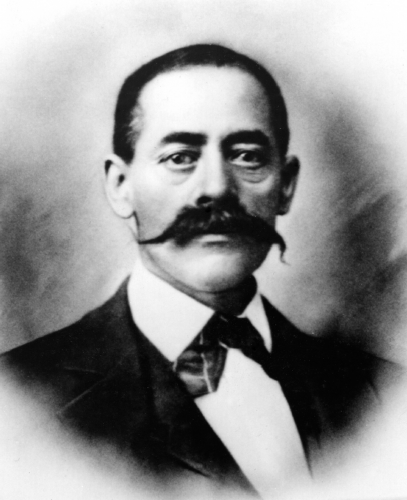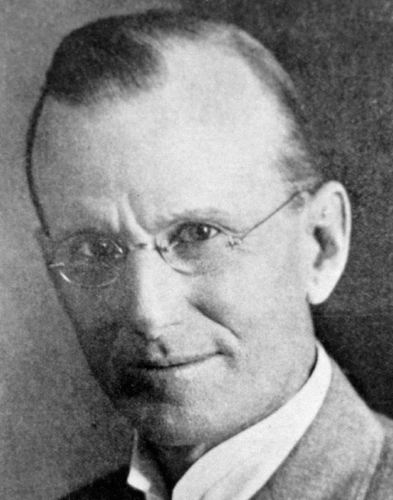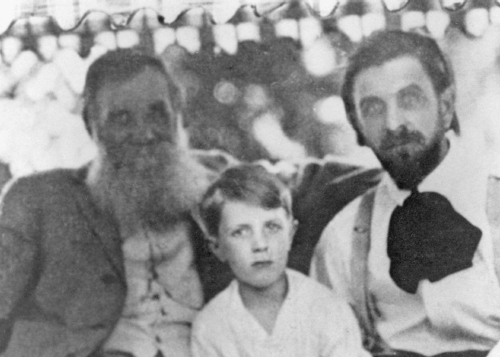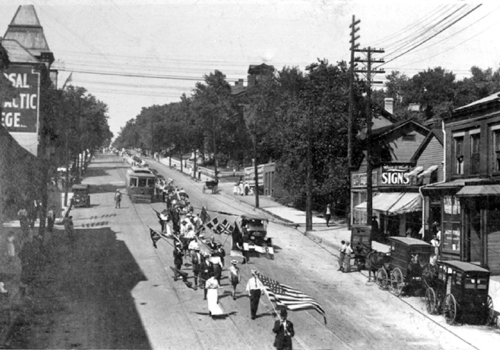History of the Grostic/ Orthospinology Procedure
Krik Eriksen
Richard J. Grostic
Learning Objectives
After studying this chapter, the reader should develop a better understanding of the history and development of the Grostic/Orthospinology procedure as it relates to the following:
Prechiropractic history of spinal Manipulation
Events in the life of D. D. Palmer before his discovery of chiropractic
D. D. Palmer’s discovery of chiropractic and establishment of chiropractic education
Dr. B. J. Palmer’s contributions as the developer of chiropractic and leader of the Palmer School of Chiropractic
Dr. B. J. Palmer’s development of the hole-in-one (HIO) technique and establishment of the B. J. Palmer Research Clinic
Events that led John Francis Grostic to enter chiropractic school
Dr. Grostic’s initial research and chiropractic involvement before teaching seminars
Development and teaching of what eventually became known as the Grostic procedure
Involvement of various doctors in the advancement of The Work and of the chiropractic profession
Death of Dr. John F. Grostic and the development of Grostic Chiropractic Presentations, Inc. and the Society of Chiropractic Orthospinology, Inc.
Development of National Upper Cervical Chiropractic Association, Inc. (NUCCA), Atlas Orthogonality (AO), and the Academy of Upper Cervical Chiropractic Organizations (AUCCO)
Contributions of Dr. John D. Grostic
This chapter reviews the history of the chiropractic profession and the development of the Grostic procedure, as well as the eventual establishment of the Society of Chiropractic Orthospinology, Inc. It includes the origin of the ideas and principles from Drs. D. D. and B. J. Palmer. Chapter 1 also discusses the revolutionary advances by Dr. John F. Grostic to upper cervical chiropractic care in detecting, quantifying, and correcting the upper cervical Subluxation complex. All of these events have led to what is known as Orthospinology and Orthogonally based upper cervical care.
History of Spinal Manipulation
Spinal Manipulation is one of the oldest and most widely practiced of all Health care methods. Early societies—such as the ancient Chinese, Egyptian, Indian, Japanese, Polynesian, Tibetan, and various indigenous tribes—have been practicing Manipulation for hundreds or thousands of years. Manipulations have been depicted in European cave paintings during the Paleolithic period. Hippocrates (460–377 B.C.), recognized as the “father of medicine,” counseled his followers to “Get knowledge of the spine, for this is the requisite for many diseases.” He practiced and taught spinal Manipulation as a means of reducing spinal distortion. In Corpus Hippocraticum, he described how assistants could aid the doctor by providing spinal traction to the patient. The doctor could then administer a directional force into the “spinal hump” with either a manual Thrust or pressure, or by means of a board acting as a Lever.1,2,3 He devised two apparatuses, known as the Hippocratic ladder and the Hippocratic board, to reduce displaced vertebrae. Hippocrates also observed the relationship between spinal distortion and various forms of organ system dysfunction. For example, he says, “Cases when the (spinal) curvature is below the diaphragm are
sometimes complicated with affectations of the kidneys and parts about the bladder …”4
sometimes complicated with affectations of the kidneys and parts about the bladder …”4
Galen (130–200 A.D.), known as the “prince of physicians,” also understood the relationship between the spinal vertebrae and the nervous system. He was thought to be the first to formulate the concept of the central nervous system, as well as the first to differentiate between nerves, tendons, and ligaments.5 He also successfully treated a prominent Roman scholar who was suffering from paralysis of the right hand with cervical Manipulation.6
Captain James Cook is best known for his voyages in the Pacific Ocean and his discovery of the Hawaiian Islands; however, he was also known to suffer from crippling rheumatism. Cook reached Tahiti in 1777, and a local chief brought 12 large women to his aid. They had the captain lay on a mattress, and blankets that were placed on the floor. The treatment of Cook is described as follows:
The twelve giantesses immediately fell upon him pummeling and squeezing unmercifully with their plump, lively hands, until his joints cracked and all his flesh felt like misused blubber. After fifteen minutes of this, the released victim got up. To his astonishment he felt immediate relief. “More?” asked the ladies, smiling. “Indeed.” Agreed the captain. Three more treatments ended his pain.7
Schiotz2 describes a witchcraft trial in Norway that took place in 1662. The accused explained her method for treating low back pain since she was a young child. She had previously trodden on the backs of sufferers from rheumatism, but now she felt that it could be done better with her hands. Spinal Manipulation was practiced by “bonesetters” during the Middle Ages and the Renaissance. Practitioners typically learned the skill through apprenticeship, which was usually handed down from generation to generation. This art was predominantly practiced in most communities in Europe, North Africa, and Asia, and it is still practiced today to some extent.
Spinal Irritation
In 1828, Thomas Brown coined the term spinal irritation in the Glasgow Medical Journal3 for ailments originating from the spine. J. Evans Riadore, author of Irritation of the Spinal Nerves (1843), is quoted as saying, “if any organ is deficiently supplied with nervous energy or of blood, its functions immediately, and sooner or later its structure, become deranged.”8 He advocated the use of Manipulation to reduce irritation of nerve roots, as evidenced by his statement:
The cause is never suspected to be in the spine, and the latter is never examined; the subluxated vertebra is never replaced in its original linear direction though easily effected in the first instance, and in all cases may in time be insured and quickly to a degree sufficiently to prevent the spinal cord or a nerve to be unduly pressed at its exit, to cause constitutional or local irritation in some organ to which the irritate nerves are distributed.9
Spinal irritation was eventually replaced with the term neurasthenia, although this original concept would be combined with the bonesetter’s Subluxation terminology in the development of chiropractic.10 The clinical success of bonesetters helped to rekindle interest in spinal Manipulation in Europe during the 19th century. This dynamic type of care was attractive to some medical doctors because they were able to have a more active role. These sentiments are summed up in Dailly’s introduction to his article on Manipulations thérapeutiques:
Therapeutic Manipulations are of value in the treatment of organic systems, and indications for their use can be found in almost all chronic illnesses. They are an important part of the system of functional therapy, where the aim is to restore correct function to the affected part, which enables normal physiological processes to be resumed, and the normal form and composition of the tissues to be restored…. For although Manipulation has always given excellent results in the treatment of disease, it is only very recently that science has been able to explain its effects, take possession of its techniques, and provide a theory and method for its use.11
Dailly goes on to say,
Mellet, Bouvier and Werner say that where the deviation is not very advanced a degree of correction can be obtained by grasping the spinous processes with the fingers; Werner attached considerable importance to this procedure which, if frequently repeated with the patient lying prone in a suitable position can momentarily straighten a spine that is still very flexible, and help to prevent deviations which, if they are not corrected, can lead to changes of shape, consistency and length in the intervertebral discs and in the spinous ligaments.11
Nineteenth-Century Medical Care
Medical care and education left much to be desired in the 19th century and up to the publication of the Flexner Report of 1910. A wide variety of practitioners with conflicting theories on Health were available to the public by the late 1800s (see Table 1-1). In the 19th century, orthodox medical physicians were commonly referred to as regulars, whereas nonmedical doctors were known as irregulars.10 A widely adopted school of thought among regulars of the time was that of heroic medicine. This philosophy held that the harshness of a remedy should be proportional to the severity of the patient’s illness. Indeed, the sickest patients received the strongest doses of medicines, often with deleterious results.
Medical doctors used a smorgasbord of drugs and treatments in the 1800s (see Table 1-2). Cocaine was
used in the late 19th century for its medicinal properties. William Halsted investigated the use of this drug as an anesthetic by injecting it into the nerve trunks to block pain.12 In 1898, cocaine was the first drug injected into the spinal cord to produce anesthesia.13 Heroic medicine was on the decline by 1850, although it was used to some extent through the rest of the century.14,15
used in the late 19th century for its medicinal properties. William Halsted investigated the use of this drug as an anesthetic by injecting it into the nerve trunks to block pain.12 In 1898, cocaine was the first drug injected into the spinal cord to produce anesthesia.13 Heroic medicine was on the decline by 1850, although it was used to some extent through the rest of the century.14,15
TABLE 1-1 Various Health Care Options Available for Americans in the 19th Century | ||||||||||||||||
|---|---|---|---|---|---|---|---|---|---|---|---|---|---|---|---|---|
|
TABLE 1-2 Popular Drugs and Treatments Used by Medical Doctors in the 19th Century | ||||||||||||||||||||
|---|---|---|---|---|---|---|---|---|---|---|---|---|---|---|---|---|---|---|---|---|
| ||||||||||||||||||||
Osteopathy
Andrew Taylor Still (1828–1917)—and later D. D. Palmer—was way ahead of his time when one considers the medical treatment for spinal irritation during the late 19th century. Medical treatment included cauterization and the application of leeches to the tender dorsal region.3 Still was motivated by the loss of four of his children to infectious diseases in February 1864. Three children (ages 9, 11, and 12) died rapidly over 3 days from a spinal meningitis epidemic, and his year-old daughter died of pneumonia later that same month.16 Still’s helplessness during these devastating illnesses and frustration by what he felt was the indiscriminate use of drugs by medical doctors drove him toward discovering what would later be known as Osteopathy. In his research during the 10 years after the death of his children, he began to observe patterns of spinal reflexes that correlated with specific illnesses. He noted that there were predictable changes in skin temperature that went along with certain diseases and that applying deep pressure to the spinal reflexes shortened the course of an infection.17 Still surmised that muscle contraction and obstruction of nerve and blood circulation to and from the brain was the cause that produced ill Health in patients.
Still, a medical doctor, became convinced that optimum function was greatly influenced by the body’s structural integrity. He focused on spinal Manipulation to treat the “osteopathic lesion” to relieve mechanical pressure on blood vessels and nerves. Still opened a school of Osteopathy at Kirksville, Missouri, in 1892 to teach his new Health care discipline. However, by 1968, the American Medical Association began the amalgamation of medicine and Osteopathy that eventually lead to osteopathic physicians receiving a full license to practice medicine in most American states.2 As a result, most osteopaths have opted to practice medicine and no longer use Manipulation in their clinical practices.
Daniel David Palmer
Daniel David Palmer was born March 7, 1845, to Thomas and Catherine McVay Palmer near Port Perry, Ontario, just outside of what is now Toronto. D. D. Palmer lived in Canada until moving to the United States when he was 20 years old. At the age of 21, he became the schoolmaster of a one-room schoolhouse in Muscatine County, Iowa. He remained a teacher for 6 years, and during this time married his first wife, Abba Lord, in 1871. Palmer thought it was time to move on to a more profitable occupation because teachers of that time were paid about the equivalent of a skilled farmhand. The newlywed couple purchased 10 acres of land located in Eliza Township, Mercer County, Illinois. D. D. cultivated more than 30 varieties of fruit trees and a wide variety of evergreens not indigenous to the region.6 He was also involved with cultivating bees for honey, which proved to be quite lucrative at times, with earnings of up to $5,000 per year at its peak.5 However, after about 18 months of farming, the marriage ended in divorce.
Six months later, D. D. Palmer married Louvenia Landers, who had an infant son (Frank) from a previous marriage. The Palmers had two daughters (May and Jessie) and one son (Joshua Bartlett). Joshua was born in What Cheer,
Iowa, in 1882, and became known as Bartlett Joshua or B. J. The family settled in What Cheer after the beekeeping venture failed and D. D. had sold his orchard. He opened up a grocery store and taught part-time at the nearby community of Letts. Tragedy struck in 1884 when Louvenia died, leaving D. D. with three children to raise, a business to run, and teaching duties to uphold. Six months later at age 40, Palmer married 26-year-old Martha Henning.6
Iowa, in 1882, and became known as Bartlett Joshua or B. J. The family settled in What Cheer after the beekeeping venture failed and D. D. had sold his orchard. He opened up a grocery store and taught part-time at the nearby community of Letts. Tragedy struck in 1884 when Louvenia died, leaving D. D. with three children to raise, a business to run, and teaching duties to uphold. Six months later at age 40, Palmer married 26-year-old Martha Henning.6
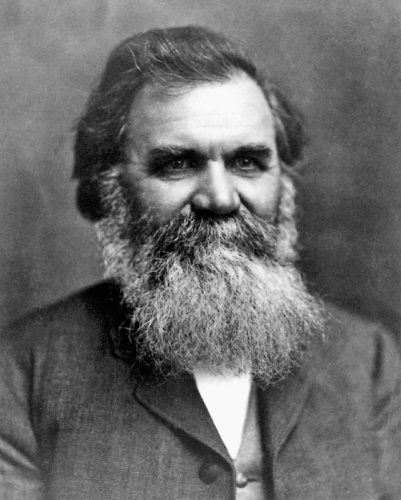 FIGURE 1-1 Dr. D. D. Palmer, the founder of chiropractic. His new form of Health care was based on current scientific knowledge but was influenced by spiritualistic and vitalistic beliefs as well. (Courtesy of the PCC Archives, Davenport, IA) |
D. D. Palmer the Healer
Palmer was a perpetually curious man with a voracious appetite for books (Fig. 1-1). His personal library was thought to encompass much of what was required reading for medical students at the University of Iowa, as well as books on spiritualism, theosophy, and various alternative Health care methods. His future writings would demonstrate that very few medical practitioners of his time in America could claim to be as well read or have as much knowledge of the medical literature.18 D.D. was also known to be a deeply religious man who read the Bible frequently, so it is interesting to see how he became intrigued with spiritualism during this time. Spiritualism was an offshoot of Christianity that taught that as the body dies, the spirit lives on and is able to be contacted through mediums at sittings. This was particularly appealing to people in the late 1800s, as many yearned to make contact with loved ones lost during the Civil War and other tragedies.
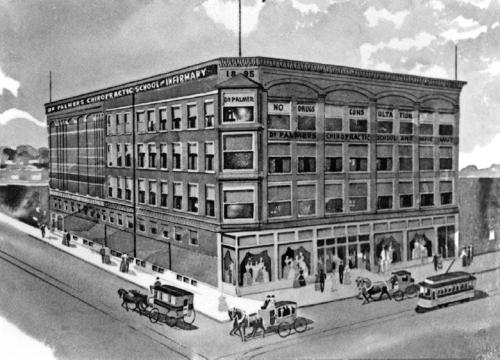 FIGURE 1-2 The Ryan Building (by Paul Norton), where D.D. Palmer practiced magnetic healing and developed his theory of chiropractic. (Courtesy of the PCC Archives, Davenport, IA) |
It is thought that Palmer’s study of this religious sect eventually led him to study magnetic healing, which originated from The Work of Anton Mesmer, M.D. (1734–1815) in the late 18th century. Mesmer believed that there was a fluid or force that filled the universe but was concentrated in the nervous system of animals (animal magnetism) and magnets. His 1776 doctoral dissertation was titled “On the influence of the planets upon the human body by means of a magnetic force.” Mesmer’s method of treatment included laying on of hands over various aspects of the patient’s body and the use of magnetic iron rods to increase what he felt was the vital forces that were depleted in sick patients.10,19
Charles Poysen introduced magnetic healing to the United States in the late 1830s. D. D. Palmer became intrigued with this form of healing, particularly after studying The Work of Paul Caster. Caster was a well-known magnetic healer who practiced in Ottumwa, Iowa, which was close to Letts. In 1886, Palmer decided to open up a magnetic healing practice called “D. D. Palmer, Vital Healer” in Burlington, Iowa. The next year, the 42-year-old Palmer moved to Davenport, Iowa, and opened his practice in the Ryan Block Building (Fig. 1-2). By 1888, his practice was flourishing, and he was able to lease additional rooms in the building. That same year he married his fourth wife, Villa Amanda Thomas. She helped manage his practice and assisted patients who required overnight care and accommodations.6
D. D. Palmer: The Discoverer of Chiropractic
Harvey Lillard (Fig. 1-3) had previously been under Palmer’s care for magnetic healing. D. D. had noticed a “peculiar bump” on his upper back after a series of magnetic healing passes with his hands over Lillard’s spine. Palmer tried to reduce the spinal distortion over a period of time with no success until he used a specific force that enabled the vertebra to slip into place. Palmer described the following event that took place on September 18, 1895:
Harvey Lillard, a janitor in the Ryan Block, where I had my office, had been so deaf for 17 years that he could not hear the racket of a wagon on the street or the ticking of a watch. I made inquiry as to the cause of his deafness and was informed that when he was exerting himself in a cramped, stooping position, he felt something give in his back and immediately became deaf. An examination showed a vertebra racked from its normal position. I reasoned that if that vertebra was replaced, the man’s hearing should be restored. With this object in view, a half-hour talk persuaded Mr. Lillard to allow me to replace it. I racked it into position by using the spinous process as a Lever and soon the man could hear as before. There was nothing “accidental” about this, as it was accomplished with an object in view, and the result expected was obtained. There was nothing “crude” about this Adjustment; it was specific, so much so that no Chiropractor has equaled it.20
This spinal Adjustment caused what appeared to be an astonishing change in the patient’s ability to hear. After a couple of minutes, Lillard was able to hear the ticking of a watch that was held a foot and a half from his ear with the other ear covered. However, there has been some contention in reference to the exact spinal level that was adjusted. B. J. Palmer and other sources state that the upper cervical spine was adjusted.10
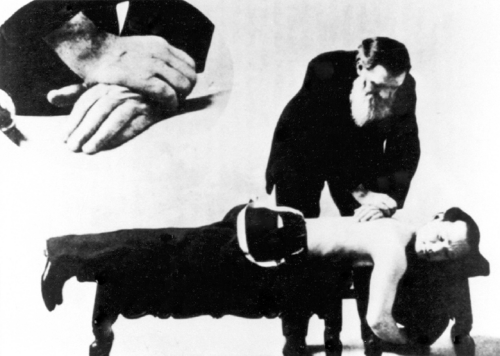 FIGURE 1-4 Dr. D. D. Palmer demonstrating an Adjustment. (Courtesy of the PCC Archives, Davenport, IA) |
Palmer’s next patient to receive a spinal Adjustment was suffering from heart trouble, and a successful outcome was also achieved. D. D. felt that he was making a profound breakthrough in Health care, and he was determined to keep it a secret. The treatment of his patients was conducted in dimly lit rooms with drapes covering the windows. He also developed other ways to prevent patients or possible observers from determining what he was actually doing with his Palpation and Adjustments (Fig. 1-4).
Soon after his discovery, D. D. Palmer sought to name his new Health care science. Reverend Samuel Weed was a patient and friend of Palmer, and he provided a few names for the new method of treatment. D.D. chose the word chiropractic from the Greek cheir, which means “hand,” and praktos, which means “done.” This new name was coined on January 14, 1896. Palmer’s practice continued to flourish. One account tells of 91 patients being seated in his reception room waiting for the 1:00 P.M. treatment session to begin (he did not practice in the morning). He charged $10 for a week of treatment, and $5 per week for continued treatment, if necessary.6 D. D.’s chiropractic practice was very successful, with an income of more than $9,200 in 1898—this is at a time when medical doctors were making between $1,000 and $1,500 annually.21
The Spinal Adjustment
D. D. Palmer readily acknowledged that spinal Manipulation had existed for thousands of years. His contribution
was the specific spinal Adjustment and later the development of a profession and its clinical philosophy. He described the administration of the Adjustment this way:
was the specific spinal Adjustment and later the development of a profession and its clinical philosophy. He described the administration of the Adjustment this way:
The basic principle, and the principles of Chiropractic which have been developed from it, are not new. They are as old as the vertebrata. I have, both in print and by word of mouth repeatedly stated, and now most emphatically repeat the statement, that I am not the first person to replace subluxated vertebrae, for this art has been practiced for thousands of years. I do claim, however, to be the first to replace displaced vertebrae by using the spinous and transverse processes as Levers wherewith to rack subluxated vertebrae into normal position, and from this basic fact, to create a science which is destined to revolutionize the theory and practice of the healing art.20
Palmer’s claim of being the first to adjust misaligned vertebrae by using the spinous and transverse processes as Levers may be open for debate. Dechambre’s 1887 Dictionary made a similar claim (see page 2), and it is unknown if D. D. was aware of this statement. It should be known that the word rack means, among other things, a toothed wheel or notched rail. Palmer was describing the Adjustment of the vertebrae as getting the wheels of a watch or gears of a machine to mesh together. This describes a precise corrective procedure as opposed to a nonspecific Manipulation used to treat restricted joints. D. D. also had a significant appreciation for the importance of the top portion of the spine:
The more I practice chiropractic, the more I study, the more I know about and think about this subject, the more I become convinced that if you will give me the 5 upper dorsals and the cervicals, you can do what you please with the rest of the body and I will bring the fellow through without them.20
Chiropractic Philosophy
Dr. A. T. Still shared D. D. Palmer’s background interest with spiritualism and magnetic healing. D. D. Palmer was likely influenced by his experience as a magnetic healer when he developed his theories related to chiropractic care. Magnetic healers believed that the unimpeded flow of energy contributed to Health, whereas obstructed flow resulted in disease. D. D. Palmer merely directed these theories to the nervous system and toward concepts like Innate intelligence, which referred to the body’s inherent healing ability. D. D. claimed that the nervous system was the pathway through which Innate intelligence flowed and functioned. His philosophy stated that all life contains Innate intelligence and that this force is responsible for the organization and maintenance of bodily Health. The purpose of chiropractic care was to remove interference to the nervous system (caused by Subluxations) by way of vertebral adustments. It was proposed that this enabled Innate intelligence to function at optimal capacity by way of the nervous system to enhance healing. Mainstream chiropractors view Innate intelligence as the body’s intrinsic healing ability as opposed to a spiritual life force.
It appears that he adopted the theory of magnetism and combined it with the bonesetter’s concept of Subluxation. This resulted in a form of Health care that proposed that misaligned vertebra(e) impinge the flow of Innate intelligence and cause illness, or what B. J. Palmer later referred to as dis-ease. D. D. also Hypothesized that disease had three general causes: mechanical, chemical, and autosuggestion (psychic irritation) of the nervous system. He further theorized that the nervous system should have a normal or optimal tone, and any alteration in this tone could be a cause of disease or illness.22 One of D. D. Palmer’s earlier theories was that Inflammation was at the core of most human illness.23 This is consistent with current medical thinking with respect to many diseases.
Chiropractic Education
The state of Health care education in North America was deplorable during the time that D. D. Palmer was a practicing magnetic healer and through his development of chiropractic as a profession. The Carnegie Foundation’s Flexner Report24 of 1910 highlighted the fact that there were too many medical schools with substandard curricula that required meager prerequisites for admission. At the time of the report, out of 155 medical schools in the United States and Canada, only 16 required 2 or more years of college education for entrance. The Midwest was particularly known for medical schools with low standards, and many were essentially little more than “diploma mills.”
It was in this setting that D. D. Palmer decided to educate others about his Health care discovery. He was further motivated after being involved in an accident at Clinton Junction, Illinois, that almost took his life. Palmer feared that his discovery of chiropractic might die with him. As a result, he began to teach. His first student was LeRoy Baker, although he did not complete the course of study. His first official student was William A. Seeley and began his education in January 1898.6 The Palmer School and Infirmary of Chiropractic was located at the corner of Second and Brady Street in Davenport, Iowa. The 6- month program cost $500 and taught students how to adjust all the Articulations of the body, with a particular emphasis on the spine.25 Students were also instructed how to correct chemical imbalances and adverse mental thoughts.22 It is interesting to note that the first 12 students to graduate from the Palmer school were medical doctors and osteopaths. In 1899, Palmer explained his new profession in his journal, titled The Chiropractic.
It is a scientific method of treating diseases. It is a new and radical departure from all other known methods. Chiropractic healing uses no drugs or chemicals, no surgical operations….
Chiropractic healers need knowledge of the anatomical construction of the human body and the physiological laws governing the distributing of its vital fluids and forces. Chiropractic healing simplifies the treatment of the most painful and prostrating forms of diseases. The human body is a very sensitive and delicately constructed piece of machinery. As the good book says: “We are fearfully and wonderfully made.” There are numerous accidents which are liable to injure and misplace the various parts of this highly sensitive nervous system.6
B. J. Palmer Becomes a Chiropractor
Four students graduated as Doctors of Chiropractic on January 6, 1902. One of these doctors was D. D.’s son, Bartlett Joshua. B. J. had previously Worked as a sales clerk at St. Onge’s Department Store, which was located on the ground floor of the Ryan Block Building. He had also practiced chiropractic before receiving degrees in the states of Iowa, Michigan, and West Virginia. Upon graduation, B. J. Palmer practiced in his father’s school and infirmary. However, on April 16, 1902, B. J. was indicted for making claims to the public to cure and heal without having a medical license.6
During the period of B. J.’s legal battle, D. D. surprisingly packed up all of his belongings and left Iowa. He may have feared a similar legal maneuver against him, although he did receive an urgent message from the family of Dr. Tom Storey. They were requesting help to find Storey, who had disappeared suddenly. Storey had been one of Palmer’s early graduates. D. D. eventually found him in California. Palmer decided to stay in California and founded a chiropractic school in Santa Barbara. Dr. Oakley Smith (eventual founder of naprapathy) and Dr. Minora Paxson (the first female chiropractor) joined D. D. as the school’s faculty. B. J. was young and inexperienced but had to take over the chiropractic school until D. D. returned to Davenport in late 1903. The father and son formed an equal partnership with the school, which lasted until May 1906.6
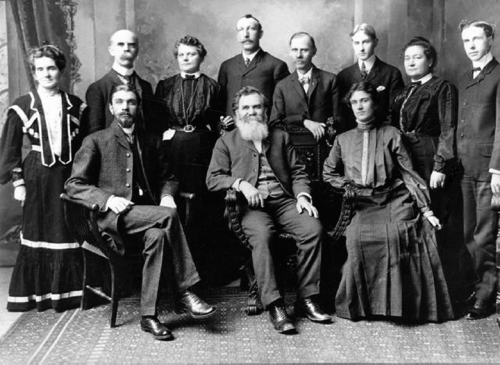 FIGURE 1-5 B. J. Palmer, D. D. Palmer, Mabel Heath Palmer, and early graduates in 1906. (Courtesy of the PCC Archives, Davenport, IA) |
The Palmer Infirmary moved to 828 Brady Street in 1905. In October of that year, D. D. was indicted for practicing medicine without a license. This year proved to be very tragic for D. D. as his wife, Villa, died suddenly in November from an overdose of morphine. During an illness before her marriage to D. D., she had been treated with opiate drugs. As a result, she became addicted to cocaine. This was not a rare occurrence at the time because cocaine was not an illegal drug. Villa also previously sustained a fracture of the spine as the result of an accident, which caused her to take morphine for the pain.5,6
During this time, two rival chiropractic schools had opened in nearby towns. Three former Palmer graduates—Dr. Solon Langworthy, Dr. Oakley Smith, and Dr. Minora Paxson—started the American School of Chiropractic and Natural Cure in Cedar Rapids, Iowa. The other school, Parker School of Chiropractic, opened in Ottumwa, Iowa. Langworthy, Smith, and Paxson were the first to publish a chiropractic textbook, Modernized Chiropractic.26 This book was published several weeks before B. J. Palmer’s The Science of Chiropractic,27 although this has been contested by Palmer. Langworthy was the first in the profession to use the term Subluxation and emphasize the importance of the intervertebral foramen.
On May 30, 1904, B. J. Palmer married Mabel Heath. Mabel obtained her chiropractic degree in 1905 and eventually became known as the first lady of chiropractic. She also became a recognized authority on anatomy and was a professor at the chiropractic school (Fig. 1-5). D. D. Palmer married his fifth wife, Mary Hudler, in January 1906, and his grandson (David Daniel) was born to B. J. and Mabel Palmer that same year. This promising year was tainted because of the previous legal indictment still hanging over D. D.’s head. His trial began March 27, 1906. Willard Carver was retained as D. D.’s attorney at the urging of B. J. At the time, Carver was finishing up school at the Parker School of Chiropractic. The attorney made several suggestions to the Palmer family to help his defense, including hiring a medical doctor to manage the school’s business affairs and edit publications sent out from the Palmer School. Carver also recommended that the school and its contents be transferred to B. J. Palmer’s wife, Mabel Heath. He even made an attempt to meet with the governor of Iowa to arrange a pardon for D. D., but this was apparently unsuccessful.6
Statements that D. D. had made in print were used against him, and he was convicted and fined $350. Before receiving his sentence, Palmer launched into a dramatic speech about the discovery and merits of chiropractic, as well as how these laws were made for the benefit of medical doctors and not the public. In fact, if he had begun his career as a magnetic healer in 1881, as opposed to 1886, he would have been grandfathered in and had the legal right to practice. D. D. chose to serve out his prison sentence instead of paying his fine. He was allowed to bring his typewriter, and he produced 40 column inches of newspaper copy related to chiropractic topics. However, he eventually grew tired of his prison cell, and his wife paid his fine so he could be released. He returned to teach at the chiropractic school for a few days and then sold his half of the institution for $2,196.79, although he had originally asked for $3,500. D. D. then moved to Medford, Oklahoma, where he opened a successful grocery store.6
D. D.’s Departure from Davenport
In 1906, Dr. Willard Carver (1866–1943) and Dr. L. L. Denny opened a chiropractic school in Oklahoma City. Carver (Fig. 1-6) was the first to develop a structural approach to chiropractic technique that he named relatology. He looked at the spine as a weight-bearing, Gravity-resisting structure that tended to adapt to different stresses placed on it, which led to Subluxations. Carver’s approach was based on the laws of mechanical engineering, and his postural/regional approach contrasted with Palmer’s segmental views of the Subluxation.19 His seminal textbook, Carver’s Chiropractic Analysis,28 was published in 1921. Carver favored a physiological theory of nerve function as opposed to the concept of Innate intelligence.10 The Carver-Denny school was the first institution to introduce minor surgery to chiropractic education, and the curriculum was increased from 9 months to 3 years. After Carver’s death, the school was absorbed by Logan College of Chiropractic.
Because Medford was located close to Oklahoma City, D. D. was invited to come lecture at the chiropractic college. But Palmer eventually decided to open his own school with Dr. Alva Gregory, a recent graduate of the Carver-Denny school. Gregory was a medical doctor who believed that restoring normal motion to the vertebral segments restored normal function. This is in contrast to Palmer’s original theory that restoring spinal alignment restored normal function. The Palmer-Gregory affiliation only lasted 3 months, so Palmer decided to open the D. D. Palmer School of Chiropractic in Oklahoma City. He published the first issue of the Chiropractic Adjustor in October 1908. The publication included the following famous quote by D. D.: “The most WONDERFUL study of mankind is man. Relieving human suffering and diffusing universal knowledge is humanitarian.”6
The Oklahoma school venture was short-lived as D. D. Palmer moved to Portland, Oregon, in November 1908. He started the D. D. Palmer College of Chiropractic with Dr. Leroy Gordon. The school was initially located in the Oregonian Building but was moved to the fourth floor of the Drexel Building at Southwest Second Avenue and Yamhill. Palmer originally developed an 18-month curriculum that included dissection, minor surgery, and obstetrics. The annual tuition was $250. Once again, the restless D. D. left the school in 1910 and settled in southern California in the spring of 1911. He continued to write and lecture extensively, particularly after the
publication of his book, Text-Book of the Science, Art and Philosophy of Chiropractic (also known as The Chiropractor’s Adjustor).20 D. D. also taught at the Ratledge College of Chiropractic, which was located in Los Angeles.6
publication of his book, Text-Book of the Science, Art and Philosophy of Chiropractic (also known as The Chiropractor’s Adjustor).20 D. D. also taught at the Ratledge College of Chiropractic, which was located in Los Angeles.6
Patricide Controversy
D. D. Palmer never fully reconciled with B. J., and he appeared to be increasingly resentful of his son’s accomplishments. This was evident in his public lectures (which appeared to become more erratic since striking his head while he was confined in the Scott County jail in 1906 for practicing medicine without a license).29 D. D. Palmer aligned himself with the Universal Chiropractic College and its president, Dr. Joy Loban. D. D. gave lectures from this rival college as “Old Dad Chiro.” Students from PSC also attended these lectures, although many walked out in disgust after D. D. launched personal attacks on B. J.30 However, D. D. accepted an invitation to visit the PSC campus and B. J.’s home. It had been speculated that an attempt at reconciliation was made given that he posed for a photograph that included three generations of the Palmers (Fig. 1-7).29
D. D. Palmer’s last trip to Davenport in the summer of 1913 will be remembered as a bizarre series of events. He was invited to take part in the annual lyceum that was taking place in Davenport. The homecoming parade was to be the first large public display for the young profession. The procession was to begin from the top of Brady Street hill and go to the Davenport business section at the banks of the Mississippi River.31 D. D. Palmer was supposed to ride in an open car with other school faculty. B. J. Palmer was set to ride in another open car with Wisconsin’s lieutenant governor, Thomas Morris (Fig. 1-8). Apparently, D. D. grew restless waiting for the parade to begin, so he got out of the car and strode to the front of the procession to order the band to begin their march. Dr. Frank Elliott (registrar for PSC and friend of both Palmers) rushed to D. D.’s side after noticing the confusion and encouraged him to return to the car with the faculty.6 According to Elliott, D. D. Palmer responded by saying, “Damn the faculty. I will call the police and see if I cannot walk in the streets where I want to.”32
Upon noticing what was taking place, B. J. Palmer drove his car out of its parade position and up to the position of the two men. Elliott commented later that the car came close but did not touch either of the men. D. D. rejected Elliott’s plea to return to the car, and he ran across the street and strode down Brady Hill Street. As the parade passed in front of the Universal Chiropractic College, D. D. darted in front of the procession to lead the parade. Shortly thereafter, the police removed D. D. Palmer from the parade.6 Universal College faculty observed what took place, and after Palmer’s death, they claimed that B. J. had actually struck his father with his car. Allegedly, this injury weakened D. D. to the extent that he was more susceptible to the illness that caused his death. However, other witnesses testified that B. J.’s car never came in contact with D. D. and that the elder Palmer deliberately ran out in front of the vehicle right before he was escorted away.32
Joy Loban filed suit against B. J. Palmer on two counts and asked for damages amounting to $52,000. B. J.’s uncle, Thomas J. Palmer (D. D.’s brother), stepmother (Mary Hudler Palmer), and other family members joined in on the civil suit. This prompted B. J. to
later write, “The devil gave us our relatives, but thank God we can choose our friends. As ever, the nephew you despise, all for which I am sorry, but don’t give a damn.”30
later write, “The devil gave us our relatives, but thank God we can choose our friends. As ever, the nephew you despise, all for which I am sorry, but don’t give a damn.”30
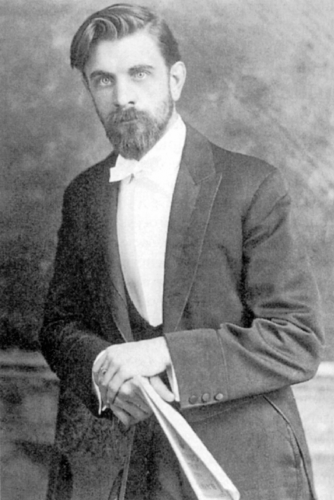 FIGURE 1-9 Formal photograph of B. J. Palmer ca. 1910. (Courtesy of the PCC Archives, Davenport, IA) |
Three grand juries refused to indict B. J., and all charges were dropped by December 1914, although this would prove to be a black cloud over B. J. Palmer for years to come.31 Loban had originally objected to B. J.’s introduction of X-ray assessment to the chiropractic curriculum. He left his philosophy class with 50 of his students to start the Universal Chiropractic College down the street of Palmer College. Loban likely had an axe to grind against B. J., and the parade incident involving D. D. was his opportunity.6
D. D. Palmer died on October 20, 1913, in Los Angeles, California, at his residence at 420 West Vernon Avenue. He had been ill for 28 days, and his death certificate stated that the cause of death was typhoid fever. Daniel David Palmer’s legacy will show that he was a genius way ahead of his time, as well as an eccentric. He was a restless man who was obsessed with finding answers to the ills and conditions that plagued mankind. D. D. was consumed with the scientific development of his profession right up to the end of his life. This is evident by this quote from 1910:
This book has been written for the purpose of teaching chiropractic as a science, making the art of adjusting specific, giving a special location and Adjustment for each disease so far as we know. Any person can learn to hit the high places, replace and displace vertebrae, relieve one disease and cause others. Let us, as chiropractors, show the world that chiropractic is a science.20
B. J. Palmer: The Developer of Chiropractic
Palmer School of Chiropractic
B. J. Palmer (1882–1961) began his career, like his father, with the understanding that chiropractic care involved adjusting by hand all Subluxations of the approximately 300 Articulations of the skeleton, with particular emphasis on the 50-plus spinal Articulations (Fig. 1-9). However, by 1911, he began to change his viewpoint. This was probably influenced by evaluations made after the purchase of X-ray equipment between 1908 and 1911. A Scheidel-Western unit was installed at PSC with the main purpose to “verify or deny Palpation findings and to verify or deny proof of the existence of vertebral Subluxations.” Beginning in 1918, Dr. Ernest A. Thompson became the head of the first spinographic department at PSC, which lasted some 20 years.33
B. J. Palmer was the clear leader of the chiropractic profession in the years following his father’s death. However, he was faced with many challenges and spent much of his time building the legal apparatus to defend the many thousands of chiropractors who were arrested for practicing medicine without a license. B. J.’s strategy, in part, was for the chiropractic profession to stick to its vitalistic philosophy and to remain “separate and distinct” from medical care. However, chiropractors continued to be prosecuted, and many refused to pay fines and chose to serve jail terms as a form of protest. Indeed, it has been estimated that at least 30,000 jail terms had been served by chiropractors by 1930.34 This was a major challenge to the profession until states provided licensure for chiropractors. This process began in 1913, with Kansas providing the first chiropractic license, although it would take until 1974 for the last state (Louisiana) to provide licensure.
The PSC expanded phenomenally in the post–World War I era, as the student body was supported by veteran benefits. The student enrollment at PSC reached a record of more than 3,100 in 1922. B. J. Palmer became a wealthy man, particularly after investing in the new field of radio in 1924. Palmer acquired the nation’s second commercial radio station west of the Mississippi River. The Davenport station was WOC (Wonders of Chiropractic), and in 1928 he purchased WHO (With Hands Only) in Des Moines. The 50,000-watt WHO
station became the western relay for the National Broadcasting Company (NBC) and brought Palmer and his message of chiropractic to millions in the “unseen audience.” (Both WOC and WHO employed a young sports announcer who would move on to Hollywood and the White House: Ronald Reagan.) B. J. Palmer was also a pioneer in television; he founded one of the first television stations west of the Mississippi when WOC-TV went on the air from Davenport.
station became the western relay for the National Broadcasting Company (NBC) and brought Palmer and his message of chiropractic to millions in the “unseen audience.” (Both WOC and WHO employed a young sports announcer who would move on to Hollywood and the White House: Ronald Reagan.) B. J. Palmer was also a pioneer in television; he founded one of the first television stations west of the Mississippi when WOC-TV went on the air from Davenport.
Ironically, while chiropractic was continually faced with oppression by the medical establishment, the majority of the profession discriminated against black would-be students by denying them enrollment into chiropractic colleges. This is particularly disheartening in light of the profession’s first patient being a black man (Harvey Lillard). The PSC catalog blatantly stated “Negroes not accepted” from the 1920s through 1950. The school also maintained a separate clinic to treat African American patients. This position was inconsistent with B. J. Palmer’s public statements on racial tolerance. A correspondence between a potential student and Palmer reiterated his abhorrence of racial discrimination, but he explained that accepting black students into PSC would drive away his southern students and put the school out of business. This was evident in 1944 when the southern contingent of PSC students threatened to walk out as a group if the school admitted a young black woman named Dorothy Clark. Fortunately, this negative period in the profession’s history began to diminish in 1950 after pressure from state legislatures, such as New Jersey.35
The Neurocalometer
D. D. Palmer believed that nerve pressure created an increased amount of heat. However, a heat-measuring device was not built until Dossa Evins invented the Neurocalometer (NCM) in 1924. This instrument was made up of two thermocouples—thermoelectric devices used to measure temperature. They consist of two dissimilar wires joined so that a potential difference generated between the points of contact is a measure of the temperature difference between the points. The NCM was used to detect differences in bilateral paraspinal temperature (see Chapter 10). Evins brought the new device to PSC, and it was used to research skin surface temperatures before and after spinal Adjustments with great success. Palmer decided to combine the use of the NCM and X-rays to develop a more accurate method of detecting vertebral Subluxations. In the 1930s, Otto Schiernbeck developed technology that enabled the NCM to produce a graph printout of the results. This new and improved device was called the Neurocalograph (Fig. 1-10).19
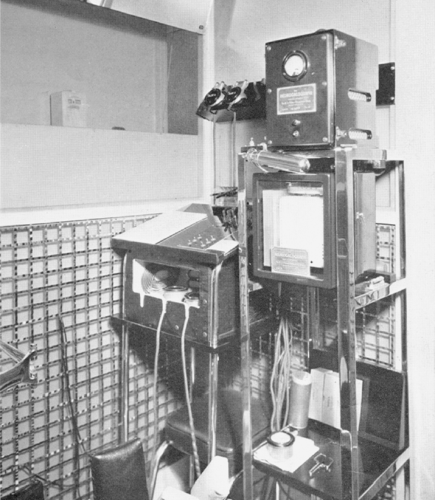 FIGURE 1-10 The Neurocalograph instrument. (Courtesy of the PCC Archives, Davenport, IA) |
B. J.’s passion for this new technology led to much contention within the profession because of various statements made by the chiropractic leader. One of his assertions was that no chiropractor could practice honestly without using a NCM in his or her practice. These types of strong sentiments were delivered during Palmer’s talk at the 1924 PSC lyceum titled “The Hour Has Struck.” Unfortunately, many doctors felt that B. J. Palmer was disingenuous with his stance on the use of the NCM because he had a financial interest in the instrument. The NCM had to be leased through PSC (B. J. owned the patent). The $3,500 instrument could not be purchased outright, but the lease cost the doctors $5 per month. Unfortunately, B. J.’s hard-line stance caused him to lose influence over the profession for decades.19 These and other issues resulted in four of PSC’s leading instructors leaving the school and founding Lincoln Chiropractic College in 1926. This school later merged with National College and was the first chiropractic institution to require four academic years of instruction.22
Hole-in-One Upper Cervical Technique
In 1931, B. J. Palmer presented the hole-in-one (HIO) upper cervical technique to the profession with much controversy and acclaim (Fig. 1-11).36 Palmer described
this new chiropractic innovation during his famous speech at the PSC lyceum, “The Hour Has Arrived.”
this new chiropractic innovation during his famous speech at the PSC lyceum, “The Hour Has Arrived.”
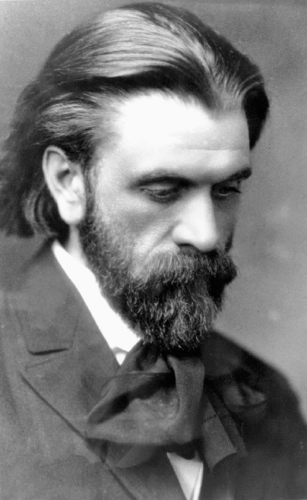 FIGURE 1-11 Dr. B. J. Palmer, the developer of the chiropractic profession. (Courtesy of the PCC Archives, Davenport, IA) |
The Adjustment with the extra something is the Subluxation that is adjusted which remains in normal situ for an extended period of days or weeks; which makes possible a continued open foramen, which permits a long continued flow of mental impulse supply; which gets cases well quicker and reduces the number of places necessary to adjust; proves that each Adjustment is such in fact, and makes possible a definite knowledge of where, when, and how to “adjust.” The Adjustment with that extra something releases interference at one place without creating more at others; thus making it the Hole-In-One Adjustment.36
The first mention of the HIO technique by B. J. Palmer is in a 1930 issue of the Fountainhead News.37 He originally felt that the HIO Subluxation could be located at any vertebra of the spine, as well as the sacrum and coccyx. However, Palmer believed from the beginning that the vast majority of HIO Subluxations occurred in the cervical spine, specifically involving the atlas or axis. He stated that the spinograph and NCM should be used to indicate the location of the Subluxation. Atlas laterality (or side slip) was determined from the antero-posterior (AP) open-mouth view. An initial plane line was drawn by choosing like points on the atlas (i.e., superior or inferior tips of lateral masses, tips of transverse processes). A skull plane line was drawn through bilateral similar points as well (i.e., inferior tips of mastoids, medial tips of occipital condyles, jugular processes, like points on eye orbits). The side that these lines converged indicated Atlas laterality. Atlas rotation was typically measured on the base posterior view. However, it should be noted that the HIO X-ray analysis involved other aspects and that it evolved over time.
B. J. Palmer defined vertebral Subluxations to include the following criteria: (i) misalignment of the vertebra in relation to adjacent segments, (ii) occlusion of a foramen or spinal canal, (iii) pressure or tension on spinal nerves or spinal cord, and (iv) interference to transmission of mental impulses.36 Palmer also made the clear distinction that chiropractors do not treat the diseases of patients; rather, the care is focused on adjusting vertebral Subluxations. After various research studies conducted at PSC, B. J. Palmer declared that the only region of the spine in which a Subluxation can occur is the upper cervical spine. However, in later years it appears that the PSC relaxed their position on upper-cervical-only teaching. On January 4, 1956, Dr. Herbert Himes (of PSC technique department) gave a lecture that became known as the “Green Light Speech.”38 Himes indicated that PSC was beginning to move away from exclusive teaching of HIO and that segmental adjusting of the entire spine could be addressed. Indeed, HIO would remain the focus of the school’s curriculum until B. J.’s death in 1961.
Contributions of Aleck Wernsing
Dr. Aleck August Wernsing was a 1926 graduate of PSC and practiced in Oakland, California. Wernsing had developed a chronic illness in 1932 that he was convinced was due to a problem in his upper cervical spine. He observed that applying pressure on his neck over his atlas transverse process provided instant relief. This motivated him to research the joint mechanics of the upper cervical spine and Worked to improve the radiographic analysis of the Subluxation. His initial Work developed from 1930 to 1932 and would be called specific atlas correction or atlas specific.39,40 Wernsing’s Work was focused on the misalignment between the atlas and the occipital condyles and how “The atlas moves laterally on its condyles as if on the rim of a circle.”40
Wernsing did not believe that the atlas could misalign in a rotatory fashion in relation to the occiput because of the anatomical shape of occipito-atlantal Articulations. He felt that Atlas rotation measured on radiographs was usually due to one occipital condyle being located anterior or posterior to the opposite condyle. This was a significant departure from the HIO technique, which took base posterior or vertex views to
measure this rotational component of the atlas Subluxation. Wernsing’s Work was well known at the time, particularly among doctors specializing in the upper cervical region. However, it was slow to catch on because of B. J. Palmer’s influence over the HIO Work. On a side note, it is interesting how Wernsing believed that the neurological component of the Subluxation resulted from pressure or tension applied to the spinal cord and/or its meninges.40
measure this rotational component of the atlas Subluxation. Wernsing’s Work was well known at the time, particularly among doctors specializing in the upper cervical region. However, it was slow to catch on because of B. J. Palmer’s influence over the HIO Work. On a side note, it is interesting how Wernsing believed that the neurological component of the Subluxation resulted from pressure or tension applied to the spinal cord and/or its meninges.40
Some historians believe that B. J. Palmer actually obtained much of his upper cervical care concept from Wernsing. This is based in part on meetings Wernsing had with Drs. Palmer, William “Laddie” Heath, and Herb Hender on January 5, 1934, when Wernsing traveled to Davenport to share his research of the upper cervical spine. Incidentally, Dr. Glen Loomis (Wernsing’s friend) cautioned him against turning his research over to anyone. However, Wernsing provided a typed set of records related to his Work to the PSC faculty.41 He also agreed to send every new idea to PSC as soon as it was perfected. Wernsing claimed that during his meeting with Palmer, Heath, and Hender, he discovered that they were Working on an upcoming book titled The Atlas Subluxation and the Axis Adjustment. This book dealt with the HIO principles that were being presently taught.42 However, in the fall of 1934, Palmer’s book came out with a new title: The Subluxation Specific—The Adjustment Specific.43 Wernsing felt that his ideas, which were included in B. J.’s book, were presented in a “rather confused manner.”41 It is thought that Wernsing influenced later revisions of HIO to involve adjusting in the side posture position.
Wernsing’s standard set of X-rays included the scout AP, true lateral, scout lateral, true AP, AP 45, and a superior inferior view. These were used to perform accurate true plane radiography. Wernsing developed the first Orthoprotractor instrument in the fall of 1934, which enabled him to measure the Subluxation in degrees; however, he stated that he did not claim to measure the position of the atlas in fractions of a degree. A second orthoprotractor was later developed that made it unnecessary to draw lines on X-rays. He measured Atlas laterality on the AP true and the AP 45 views. Atlanto-axial rotation was measured on the AP and true lateral view. Wernsing did not take routine X-rays after the initial Adjustment, although he did recommend periodic radiographs to assess the type of correction being made. He felt that one of the benefits of obtaining relative measurement in degrees was to determine the magnitude of the correction.40
Stay updated, free articles. Join our Telegram channel

Full access? Get Clinical Tree


